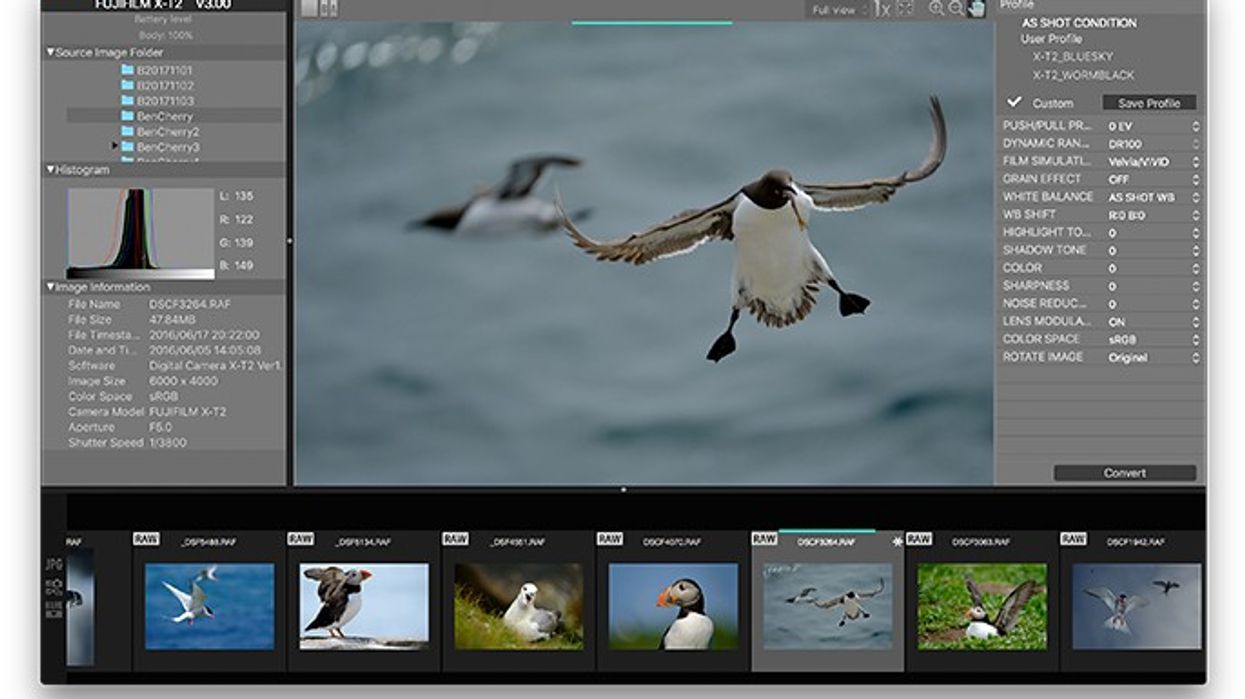Need to Speed Up Processing? Fuji Suggests Using Your Own Camera
Here's hoping Fujifilm's latest innovation spreads to the entire industry.

File formats and resolutions have been getting bigger, and, it often feels like, at a faster rate than computers are able to handle. While RED, one of the innovators in the "high resolution" space, has the RED ROCKET card for accelerating your processing in post-production, it remains an eternal hunt for the rest of us, putting enough GPU power into our computer to survive.
Fujfilm has now released a possible solution, currently targeted at still photographers and videomakers (hopefully)in the near future.

Fujifilm's method is to use digital cameras as an external processor. It makes a ton of sense, as the processor power in your camera is primarily designed to deal with images from that very camera. Highly customized hardware makes processing images from the sensor into JPEGs as fast as possible, and so why wouldn't you be able to put that to work in post-production to speed up your post workflow? To make it work, you just need to plug your XT-2 (or similar camera) into your computer, fire up Fuji's proprietary processing software, X Raw Studio, and the power of your camera is ready for faster processing.
The export took 27 seconds while doing similar effects to the raw files in Lightroom, while it only took 14 seconds in Fuji Raw Studio.
We found that we were able to process the same batch of raw files about twice as fast through X Raw Studio as we were with the newest release of Lightroom Classic. The export took 27 seconds while doing similar effects to the raw files in Lightroom, while it only took 14 seconds in Fuji Raw Studio. These are impressive results. This might not matter if you're doing a small batch, but if you have hundreds of images to process, this could really be a timesaver.
To be clear, the software doesn't have all of the image controls that you get with Lightroom (at least not yet) and Lightroom is still the tool of choice for dialed in control. However, sometimes you need speed, and Fuji X Raw studio is a great option for that.

Unfortunately, Fujifilm X Raw Studio doesn't work without the camera attached. As a result, while we could conduct a "Fuji vs Lightroom" comparison, we couldn't do a "Fuji with camera vs. Fuji without camera" comparison to see how much the camera processing helps the process. The exciting thing here isn't just the speed boost (which is great), but the freshness of the idea.
If it proves popular, hopefully, it will be imitated either by other manufacturers or perhaps by Adobe, adding the feature to Lightroom. In a dream world, how wonderful would it be to get home from a shoot, plug your RED EPIC into your computer via USB3 or Thunderbolt 3, and have your dailies in half-the-amount-of-time?
Yes, there will be a bit more wear and tear on the system, but it will still be quietly sitting on your desk, processing with the fans on. Compared to the harsh life a camera sees on set, it probably won't affect its lifespan that much.
We can still hope that this innovative idea will spread through the camera universe.
The video focused XH-1 doesn't do internal raw, unfortunately, so this isn't really exciting for videomakers just yet. If Fujifilm is secretly working on a $6500 EVA1 competitor that does internal raw, let's hope they are planning features like this on launch.
If they aren't planning such a camera (which would go well with the MK zooms), we can still hope that this innovative idea will spread through the camera universe. At the moment, Fuji has the lead.
For more info, check out theFuji X Raw Studio site.
Tech Specs
- Works with Fujfilm GFX 50S, X-T2, X-H1, X-Pro2, X100F
- Mac 10.10.5 or Windows 7 and up required












